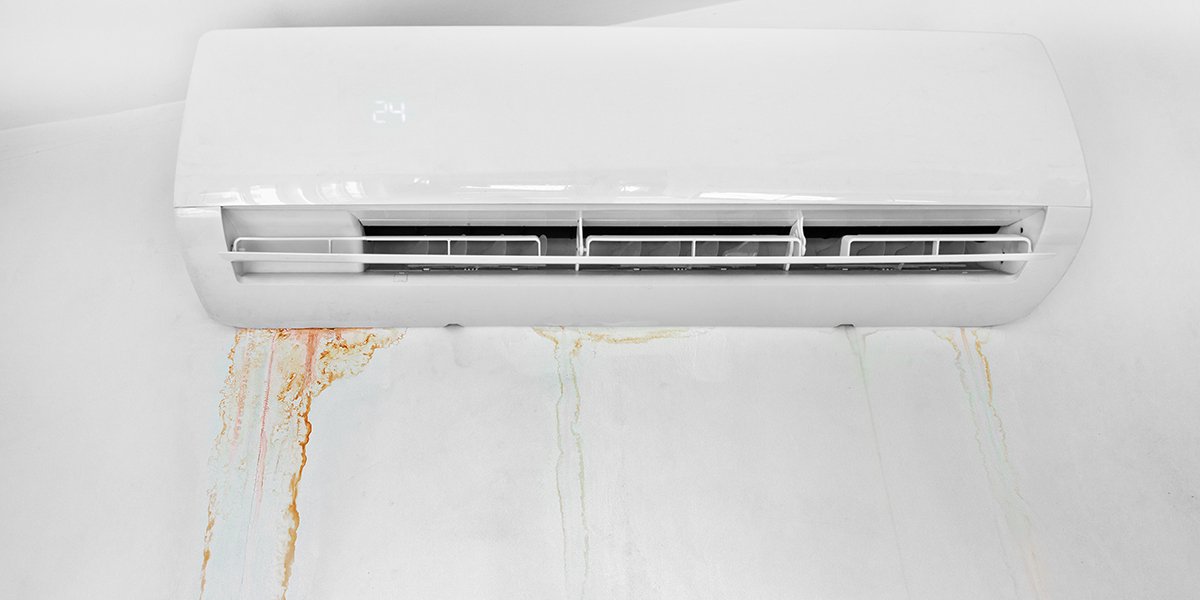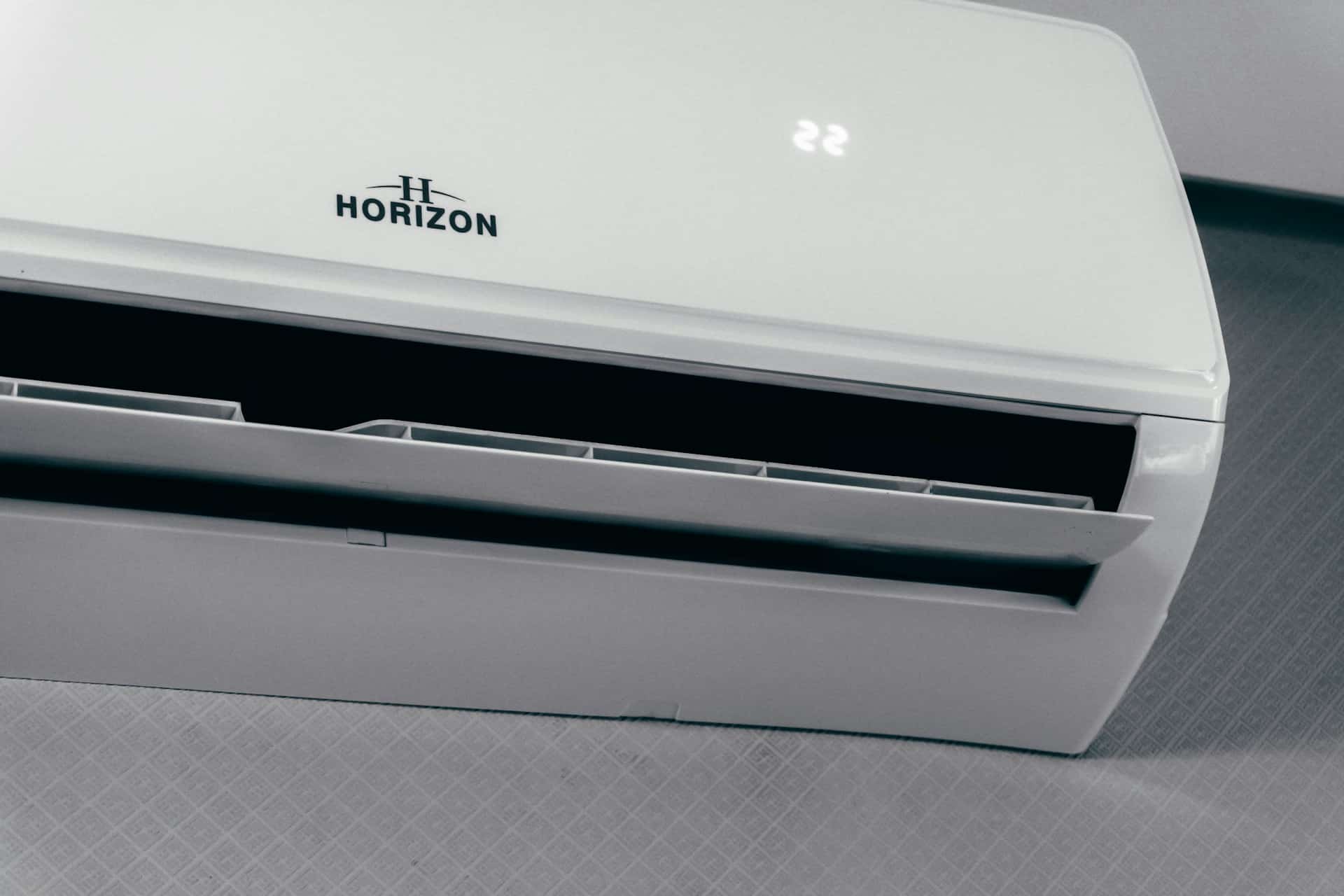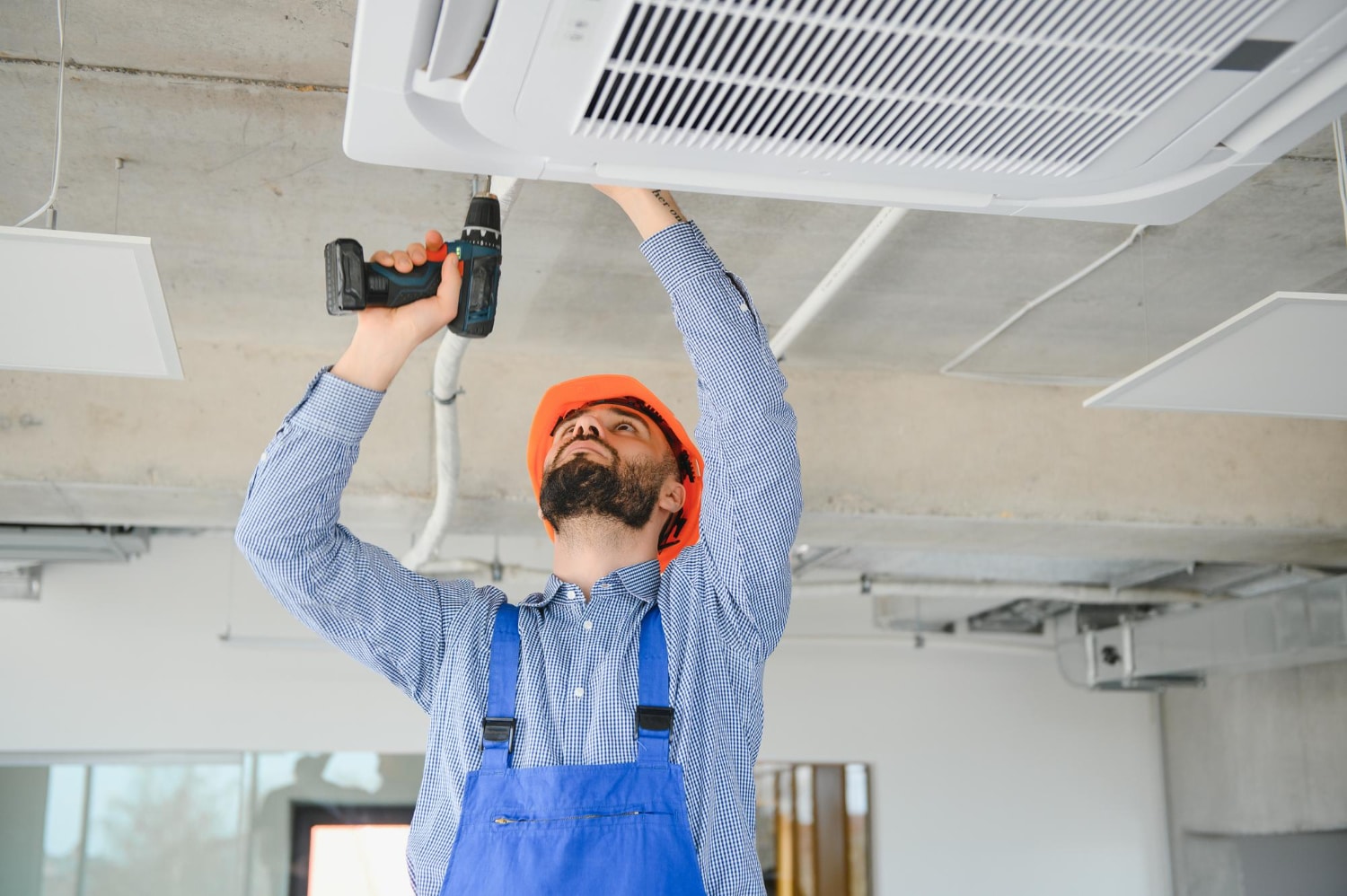Hey, What’s That Musty Smell? So, ever turned on your AC or window air conditioner, only to be hit with a funky, musty smell? Yeah, that’s probably mold. Not only is it gross, but it can mess with your health, too. If there’s mold in your air or mold in your air conditioner, it’s more than just a smell—it’s a problem you need to tackle fast. But don’t worry, I’m here to help break it all down. Usually, mold grows due to moisture from condensation, dust, and poor ventilation. However, we’ll look at why mold grows in detail, how to spot it, and most importantly, how to kick it to the curb!
Let’s get into it!
Why Is There Mold in My AC Unit?

Credit: trusthomesense.com
People, you might be surprised at how common mold grows in air conditioning units is. Air conditioning units provide the ideal setting for mold since these systems generate moisture, which causes mold to thrive. When that moisture doesn’t dry correctly, it produces the ideal environment for mold. If your air conditioning system or window AC unit releases musty odors, chances are strong that mold is the culprit.
Here are the main causes of mold in AC units:
- Moisture accumulation—When condensation develops inside your AC unit and doesn’t dry correctly, it provides mold an ideal place to flourish.
- Poor Ventilation -Your air conditioner’s airflow could be limited, which would trap humidity and provide the ideal breeding environment for mold to grow.
- Dirty filters – Dirty air filters retain dust and moisture, providing mold with an environment to flourish.
- Neglecting maintenance—Dust, grime, and moisture build up in your unit if you don’t clean it frequently, which helps mold to establish itself.
- High humidity – Humidity levels over 50% give the ideal environment for mold spores to thrive in your window air conditioner or air conditioning unit.
Signs of Mold in Your AC Unit
Now, let’s talk about the signs that can tell you beforehand that something is wrong. Occasionally, mold in your AC unit doesn’t just appear uninvited and knocks on your door. It leaves signs behind so you can find it early. Here is something to watch out for:
- A musty, mildew-like odor— Mold in your air conditioner smells like a wet basement or dirty socks. Your air conditioning system is obviously producing that odd smell if it comes on.
- Allergy symptoms – Folks, if you start sneezing or have itching with the AC on, mold is probably the cause.
- Mold Spots – Look at your AC unit itself, window air conditioner, or air conditioner vents. Green, black, or fuzzy patches indicate some mold.
- Reduced airflow – Mold inside window units can jam things up, so if your air conditioning unit isn’t cooling as well as it used to, mold can be the cause.
- Constant wetness or leaks – Excessive water surrounding the AC unit or ducts could be housing mold.
Got any of those signs? I think your AC is having some trouble.
How to Remove Mold from Your AC Unit?

Credit: southfraserheating.com
Okay, so mold exists in your AC, but don’t freak out. Here is a thorough guide on how to handle it. You can handle this!
Disable the AC unit
First things first, to stop spreading mold spores, turn off the unit. Because safety is always first.
Safety First
You don’t want to be inhaling mold spores. Here is what you must do to be safe:
- To prevent breathing in mold, wear a mask—preferably an N95.
- Wear gloves to prevent it from touching your hands.
- Open windows to help ventilate the space and lower airborne mold spores.
Change or Clean Filters
The first place for mold to hide is the air filters. Depending on the kind of filter you own, clean or replace it.
- Disposable filters? Throw them away and get a new one.
- Reusable filters? Then dry them thoroughly before reinstalling after giving them a good scrub with warm water and soap.
Clean Evaporator Coil

Credit: superiorhomesupplies.com
This step is key since the evaporator coil remains wet, which is ideal for mold development.
- Apply a coil cleaning or a combination of mild detergent and water on the coil.
- Gently scrape it clean with a soft sponge or brush.
- Wash the coil and ensure it completely dries.
Wipe the Vents and Ducts
Mold also finds a good place in the ducts and vents. Wipe them down with a vinegar-water mixture or a mold remover to clean them.
- Wipe within the vents and ducts using a sponge or microfiber cloth.
- When you finish, dry everything totally.
Clean the Drain Pan
The drain pan gathers moisture; if it is not cleaned, mold could develop directly in it.
- Remove any standing water from the pan.
- Use a little bleach solution or vinegar to clean the pan.
- Give it a good rinse and let it dry totally.
Apply a Mold Inhibitor
A mold inhibitor will help you to ensure that mold stays away for good.
- Use it on any additional surfaces where mold might grow, the filter, and the coil.
- Turn your air conditioning unit back on after everything has dried.
Follow these steps and thank us later.
However, if you want to learn more about AC problems, check out this article and see if your AC is working properly.
Prevention Tips – Keep Mold Out for Good

The best way to deal with mold is to prevent it from appearing in the first place. Here is how to maintain your AC system mold-free and in tip-top condition:
- Maintain indoor humidity – You can do it by using a dehumidifier. It will keep it between 40 and 50%. This reduces the likelihood of mold developing in the AC unit.
- Keep Filters Clean – You can set a monthly reminder to clean air filter. Though it is a little effort, it has great impact.
- Get expert upkeep – To maintain everything operating well, have an expert inspect your AC system annually. This is where we kick in. At JLM Air Conditioner and cleaning services, we make sure that your home AC unit is in top shape with our maintenance and inspection services. So, get in touch with us now if you want your system to be in top shape.
- Repair leaks – Do this right away since leaks are responsible for mold growth. If you notice a leak, have it fixed immediately.
- Allow the AC to run for a little longer – Once it cools, let it run for an additional 5–10 minutes to assist in drying off any moisture.
When to Call in the Pros
If the mold problem is too big or you’re not sure how to handle it, it might be time to bring in a professional. Here’s when to make that call:
- The mold has spread to large or hard-to-reach areas.
- You can’t access or clean certain parts of your AC.
- You have health concerns related to mold exposure.
- Mold keeps coming back even after you clean it yourself.
Mold removal pros can ensure that everything is cleaned properly and that your AC unit is free of any hidden mold spots.
Final Words
So, it all comes down to that mold in your AC can seem like a nightmare, but with the right care and maintenance, it doesn’t have to be. Keep an eye out for those warning signs, tackle mold early, and follow these simple steps to keep your AC unit mold-free. With a little attention, your air conditioning will cool your house without any musty odors or allergy flare-ups.
Now go ahead and kick that mold out for good.
Frequently Asked Questions (FAQs)
Here are some of the questions that people ask about mold in the AC unit.
Q: Can mold in my AC unit make me sick?
A: Yes, mold can trigger allergies, asthma, and other respiratory issues, especially for people sensitive to it.
Q: How often should I clean my AC filters to avoid mold?
A: Aim to clean your air filters every month. If you have pets or live in a humid area, you might want to clean them more often.
Q: Is vinegar or bleach better for killing mold in an AC?
A: Vinegar is a gentler, safer option. Bleach can work, but it is more potent and can be harsh on certain materials. Use it sparingly.
Q: How do I know if I need a new AC unit instead of cleaning?
A: If mold keeps coming back, or if your AC unit is super old and inefficient, it may be time to replace it. A professional can help you decide.



